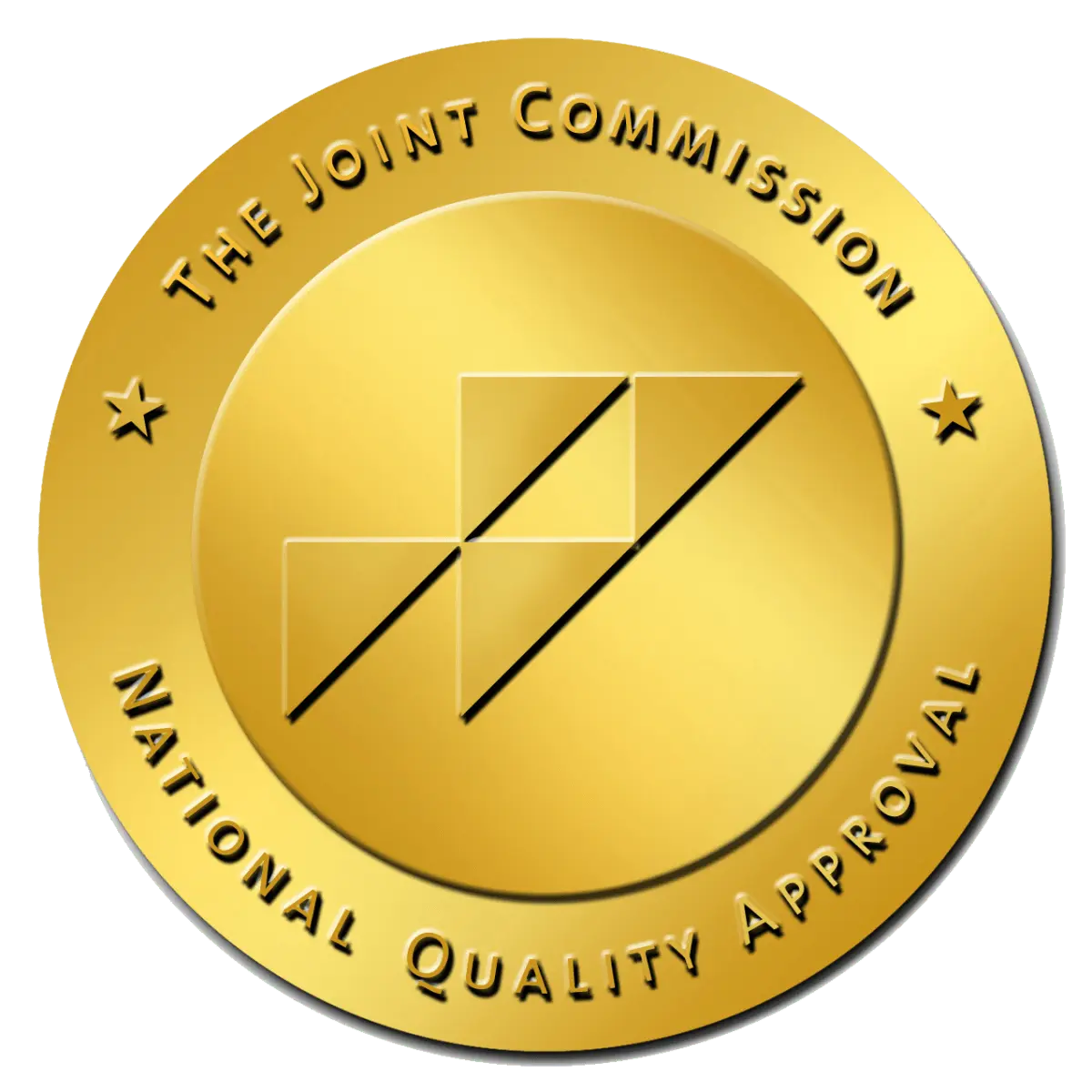What is Blue Fentanyl?
Written by: Michelle Beaupre, PhD, LCSW | Reviewed by: Christian Small, MD
In recent years, a potent and dangerous substance has emerged in the illicit drug market, raising significant concerns among healthcare professionals, law enforcement, and the public. This substance is known as blue fentanyl, a synthetic opioid that is much stronger than heroin and morphine. Counterfeit pills made to look like prescription oxycodone are surfacing in communities everywhere. These pills are often laced with fentanyl and can be potentially fatal, making them hard to spot and extremely dangerous.
According to the Centers for Disease Control and Prevention (CDC), synthetic opioids like fentanyl contribute to nearly 70% of overdose deaths, highlighting the severe impact of this drug on public health. Understanding what blue fentanyl is, its effects and the risks associated with its use is crucial for both users and those working to combat the opioid crisis.
Blue fentanyl is typically manufactured illegally and sold on the black market, often disguised as prescription pills or mixed with other drugs to increase potency. Illicit manufacturers usually add its “blue” color to differentiate it from other substances, although the color itself does not mitigate the drug’s dangers. The high potency of blue fentanyl means that even a tiny amount can be lethal, significantly increasing the risk of overdose. This makes it imperative for individuals to be aware of the signs of fentanyl use and overdose and for communities to implement strategies for prevention, education, and treatment to address the widespread impact of this powerful opioid.

Understanding Blue Fentanyl
Blue fentanyl is a variation of fentanyl, a synthetic opioid initially developed for medical use to manage severe pain, particularly in cancer patients. Fentanyl is incredibly potent, estimated to be 50 to 100 times more powerful than morphine. When used under medical supervision, fentanyl can be safe and effective. However, the illicit manufacturing and distribution of fentanyl have led to a surge in overdose deaths. Synthetic opioids other than methadone, primarily fentanyl, have been the main driver of drug overdose deaths, with a more than 7.5-fold increase from 2015 to 2022.
The “blue” in blue fentanyl refers to the color often added to the drug during its illegal production. This coloring can help distinguish it from other substances, though it does nothing to mitigate the drug’s dangers. Blue fentanyl is usually sold in pill form, mimicking prescription medications like oxycodone, but it can also be found as a powder or mixed with other drugs. This deceptive appearance increases the risk of accidental overdose, as users might not be aware they are consuming a substance as potent as fentanyl. Understanding fentanyl statistics can provide crucial insights into the rising dangers of illicit fentanyl use and its devastating impact on communities.
The Dangers of Blue Fentanyl
The primary danger of blue fentanyl lies in its potency. Fentanyl is estimated to be 50 to 100 times more powerful than morphine, and just a tiny amount—equivalent to a few grains of salt—can be lethal. This high potency significantly increases the risk of overdose, especially when users are unaware they are consuming fentanyl. Illicit drug manufacturers often mix fentanyl with other substances, such as heroin or cocaine, to enhance their effects or reduce production costs. This practice further heightens the risk, as users might not know they are ingesting a potent opioid.
The risk is compounded by the fact that these counterfeit pills and powders can look identical to less potent drugs, making it difficult for users to judge the safety of what they are taking. According to the Drug Enforcement Administration (DEA), six out of every ten counterfeit pills with fentanyl contain a potentially lethal dose. This statistic underscores the extreme danger of unknowingly ingesting fentanyl-laced substances. The DEA also reports that as little as 2 milligrams of fentanyl can be deadly, which is about the amount that fits on the tip of a pencil.
Signs of a fentanyl overdose include:
- Severe drowsiness or difficulty staying awake
- Confusion or disorientation
- Slowed or stopped breathing
- Blue or purple lips and fingernails
- Limp body
- Loss of consciousness
If you suspect someone is experiencing a fentanyl overdose, it is critical to seek emergency medical help immediately. Administering naloxone, a medication that can reverse opioid overdoses, can be life-saving, but prompt medical attention remains essential. According to the CDC, the timely administration of naloxone has saved thousands of lives, yet it must be followed by medical intervention to ensure the person’s safety and provide necessary care.
Why Blue Fentanyl is So Prevalent
The rise in blue fentanyl availability can be attributed to several factors:
- Ease of Production: Synthetic opioids like fentanyl are easier and cheaper to produce than natural opiates derived from poppy plants. This makes fentanyl a more attractive option for illegal drug manufacturers.
- High Profit Margins: Due to its potency, a small amount of fentanyl can be used to produce a large number of doses, resulting in significant profits for traffickers.
- Demand for Powerful Opioids: As addiction rates have increased, so has the demand for more potent substances. Users seeking a stronger high may turn to fentanyl, sometimes without knowing the risks involved.
Blue Fentanyl and the Opioid Crisis
The opioid crisis has been exacerbated by the proliferation of fentanyl and its analogs. The introduction of blue fentanyl into the drug supply has only intensified this public health emergency. For those attempting to stop using fentanyl, understanding the fentanyl withdrawal timeline is essential. Withdrawal symptoms can begin within hours of the last dose and may include severe muscle and bone pain, sleep disturbances, diarrhea, vomiting, cold flashes, and severe cravings. The acute phase of withdrawal typically lasts about a week, but psychological symptoms like anxiety and depression can persist for much longer.
Compounding the dangers of blue fentanyl, there have been increasing reports of fentanyl being mixed with other substances, such as xylazine. Xylazine is a veterinary tranquilizer not approved for human use, and its combination with fentanyl can lead to even more severe health risks. The presence of fentanyl and xylazine in the drug supply can result in unpredictable and potentially fatal reactions.
Prevention and Treatment
Addressing the blue fentanyl crisis requires a multifaceted approach involving prevention, education, and treatment. Here are some critical steps that can help:
- Education and Awareness: Increasing public awareness about the dangers of blue fentanyl is vital. Educational campaigns can inform people about the risks associated with fentanyl use and how to recognize the signs of an overdose.
- Access to Naloxone: Making naloxone more widely available can save lives. Many states have implemented programs to distribute naloxone to first responders, community organizations, and individuals at risk of overdose.
- Enhanced Law Enforcement Efforts: Strengthening efforts to disrupt the production and distribution of fentanyl is crucial. This includes targeting the supply chain and prosecuting those involved in manufacturing and trafficking the drug.
- Treatment Programs: Providing access to effective addiction treatment programs is essential for helping individuals overcome their dependence on fentanyl and other opioids. Programs like those offered at Villa Oasis, which include residential treatment, detox, outpatient care, and sober living, can provide comprehensive support for individuals struggling with addiction.

Fentanyl Addiction Treatment
At Villa Oasis, we understand the complexities of addiction and the unique challenges posed by substances like blue fentanyl. Our comprehensive approach to fentanyl addiction treatment ensures that individuals receive the care and support they need to achieve lasting recovery. Here’s how we can help:
Residential Treatment
Our residential treatment program provides a structured and supportive environment for individuals to focus on their recovery. This program includes individual and group therapy, holistic therapies, and life skills training to help clients build a strong foundation for long-term sobriety.
Detox
Detoxification is the first critical step in overcoming addiction. Our detox program offers medically supervised care to help individuals safely withdraw from substances like fentanyl. Our team of medical professionals provides round-the-clock monitoring and support to ensure a safe and comfortable detox process.
Outpatient Care
For those who do not require residential treatment or have completed an inpatient program, our outpatient care options offer flexible treatment plans. This allows individuals to continue their recovery journey while maintaining their daily responsibilities. Outpatient care includes therapy sessions, counseling, and support groups.
Sober Living
Our sober living program provides a supportive community for individuals transitioning from treatment back into everyday life. This program offers a safe and structured environment where clients can practice the skills they have learned in treatment and receive ongoing support from peers and staff.
The Importance of Seeking Help
If you or a loved one is struggling with addiction, particularly to substances like blue fentanyl, seeking professional help is crucial. The risks associated with fentanyl use are significant, but recovery is possible with the right support and treatment. Blue fentanyl represents a severe and growing threat in the ongoing opioid crisis. Its high potency and the prevalence of illicit manufacturing make it a dangerous substance that significantly increases the risk of overdose and death. Education, prevention, and access to effective treatment are essential components in addressing this issue.
At Villa Oasis, we are committed to providing comprehensive and compassionate care for individuals grappling with addiction. Our programs are designed to meet each client’s unique needs, offering the support and resources necessary for lasting recovery. If you or someone you know needs help, contact us today to learn more about our treatment options and how we can assist you on the path to recovery.

